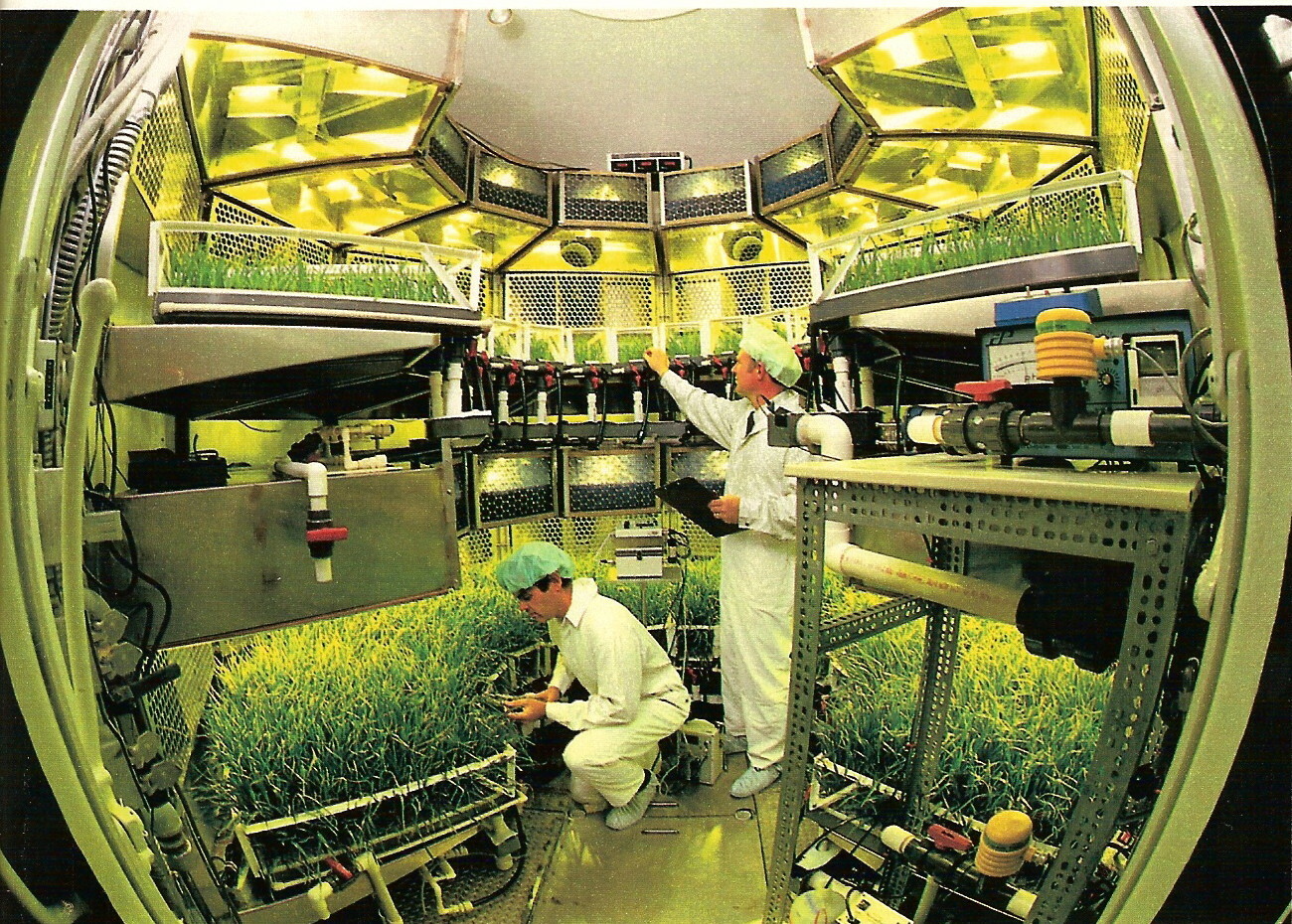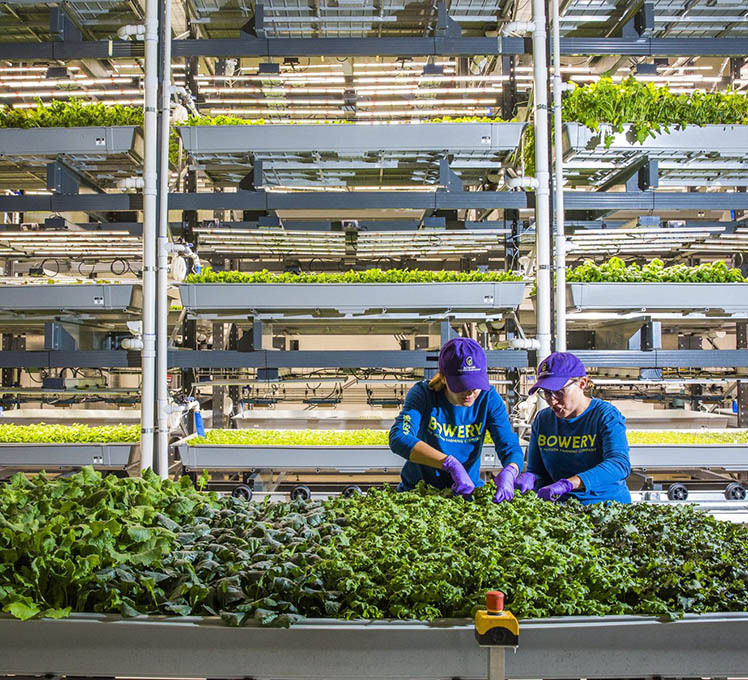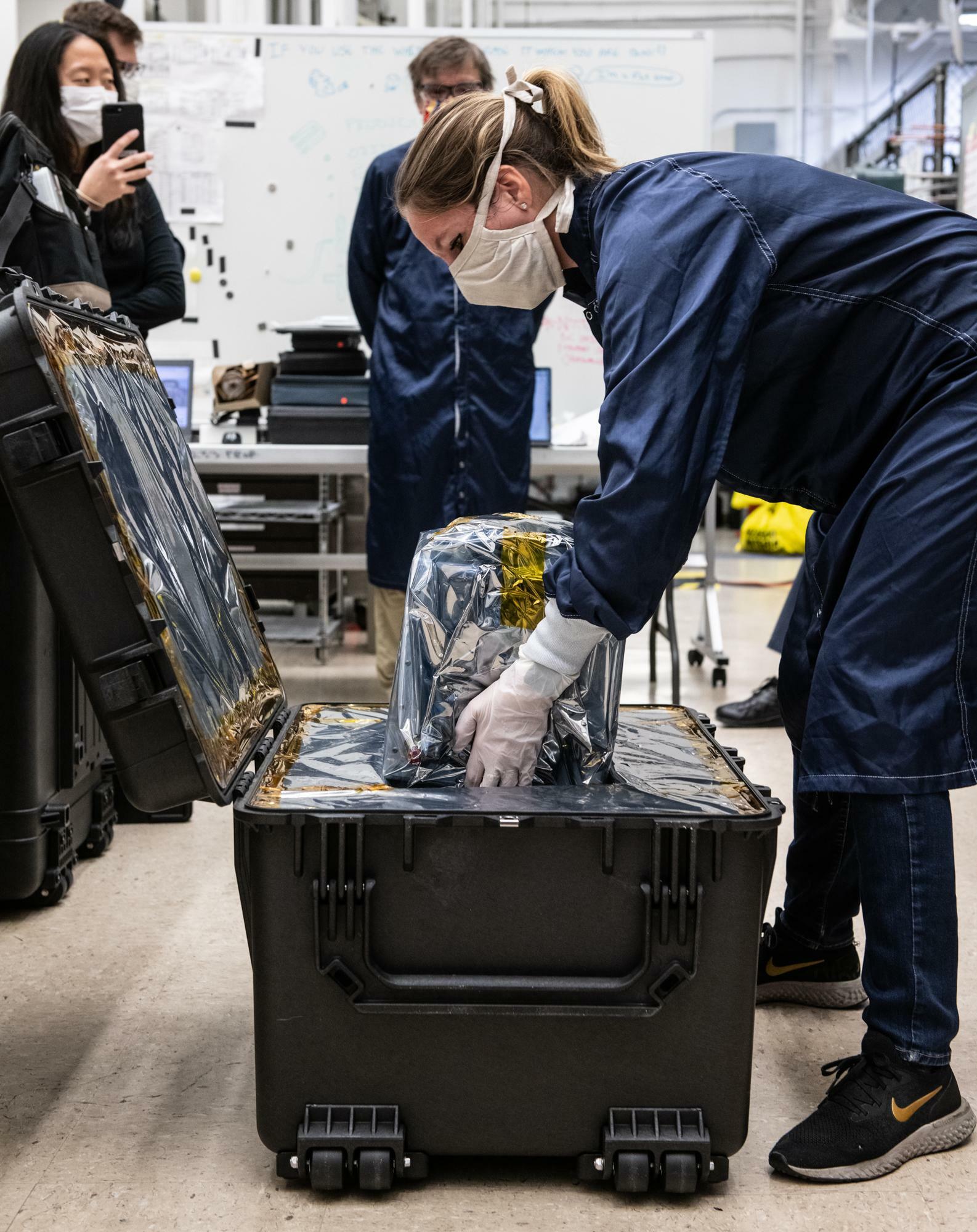NASA didn’t invent Velcro. But it did dream up these surprising things.

Between the Hudson and East rivers, practically every square-foot of New York is built, forcing Manhattan architects to look up and down when clients want to expand.
The lack of green acres makes it an unusual setting for farming, but like a dandelion in a sidewalk crack, the industry has found unconventional places to break through. Growers are maximizing their vertical real estate: Rather than tilling Central Park, they’re stacking crops to take up less space and water.
NASA pioneered the system they’re using, known as vertical farming.
Perhaps surprisingly, the U.S. space agency is a leader in growing methods as it explores how to feed and supply oxygen to astronauts in deep space. Bowery Farming Inc. is one business harnessing NASA’s data-driven model to produce lettuce. Bowery’s “smart farms,” tucked inside vacant warehouses, supply grocery stores and restaurants throughout the city. The company has environmental sensors and cameras throughout its facilities, leveraging machine learning to manage the crops. Just as a person can learn to identify tipburn — browning on the edges of lettuce leaves — computers can, too.
“It sounds kind of high tech and a little science fiction-y — and it is,” said Dan Lockney, who heads NASA’s technology transfer program, the office focused on commercializing the agency’s inventions.
Bowery is one company featured in Spinoff 2022, an annual report published since 1976 to highlight some of the commercializations of NASA ingenuity. Every year, the agency develops 1,600 to 1,800 new technologies. About one-third is software, which it makes free to the public because the federal government doesn’t hold copyright. For hardware, NASA licenses out patents for about $ 2,500 to $ 10,000 upfront.


NASA has invented concepts, software, material, and equipment from scratch to accomplish its missions for over 50 years.
“We can’t just go buy a space telescope at Target, or you can’t go buy a spacesuit at the department store. The Gap doesn’t make astronaut helmets,” Lockney said. “We’ve got to make all this stuff ourselves.”
But when Congress created the space program in 1958, lawmakers required it to develop technology that could also benefit people on the ground. That led to a slew of innovations in everyday life that many people might not know started with NASA. And we’re not talking about space pens, Velcro, and Tang, the powdered orange drink. For the record, none of that astronaut arsenal was invented by the agency, contrary to urban legend.
“The Gap doesn’t make astronaut helmets. We’ve got to make all this stuff ourselves.”
When COVID-19 put strains on hospital resources, NASA engineers invented a new high-pressure ventilator in a little over a month using fewer than 100 parts, none of which were already needed in the supply chain for existing ventilator models. The new device was patented, then NASA gave the licenses for free to the world.
About 130 people specialize in technology transfer and intellectual property at NASA, figuring out how to bring the wares to the marketplace. The staff explores potential customers for every invention patented. That work includes going out and pitching to businesses they think could use or sell it, Lockney said.
The new report, released earlier this week, features a section on “spinoffs of tomorrow.” These are some of the new NASA brainchildren in search of adoptive entrepreneurs:
-
a system to unlock phones and computers using heartbeats
-
a thin-film device that can convert carbon dioxide into fuel
-
a self-healing aluminum that can repair cracks in aircraft, tanks, and fuel lines.
NASA has a track record of spurring ventures and new products. The team attributes its success to the proverbial chip on its shoulder that’s been there from the get-go.
“NASA constantly has had the question asked of it, ‘Why do we spend the money in space when we’ve got problems here on Earth?'” Lockney said. “It has been incumbent upon us to convince the naysayers.”
“NASA constantly has had the question asked of it, ‘Why do we spend the money in space when we’ve got problems here on Earth?’ It has been incumbent upon us to convince the naysayers.”
Because of that skepticism, the team has a prepared example in its back pocket for how NASA has touched the lives of firefighters. The fireproof suits and lightweight composite air tanks they use came from NASA, they say, as did a portable device that can detect a human heartbeat under 20 feet of rubble, even at a noisy rescue site.
Of the 200 licenses issued last year, about one in four were given to startup companies without an upfront royalty fee, Lockney said. When the agency does charge, the first $ 5,000 goes back to the original inventor as an award.
But no one at NASA gets “helicopter rich” on these inventions, he claims.
“You might be able to, depending on the school, cover a semester of tuition for your kids. You might be able to buy a used motorcycle,” Lockney said. “We’re not here to get rich. We’re here to do cool stuff.”